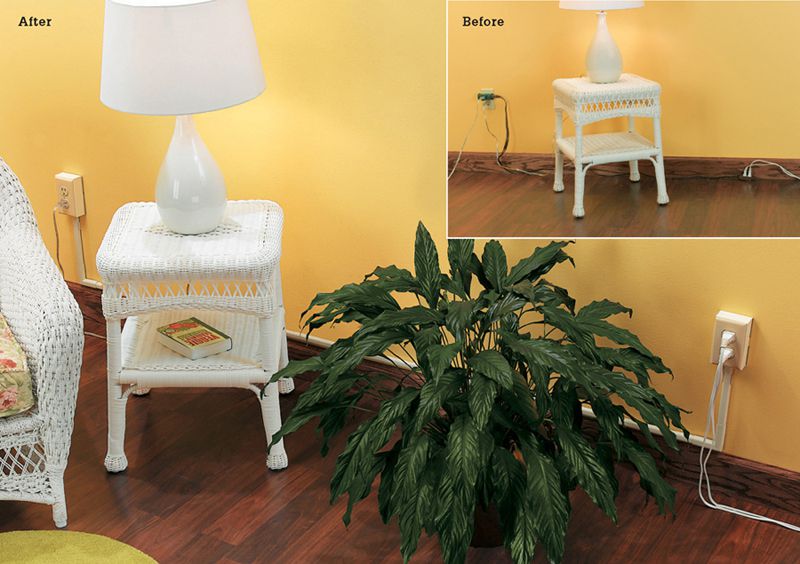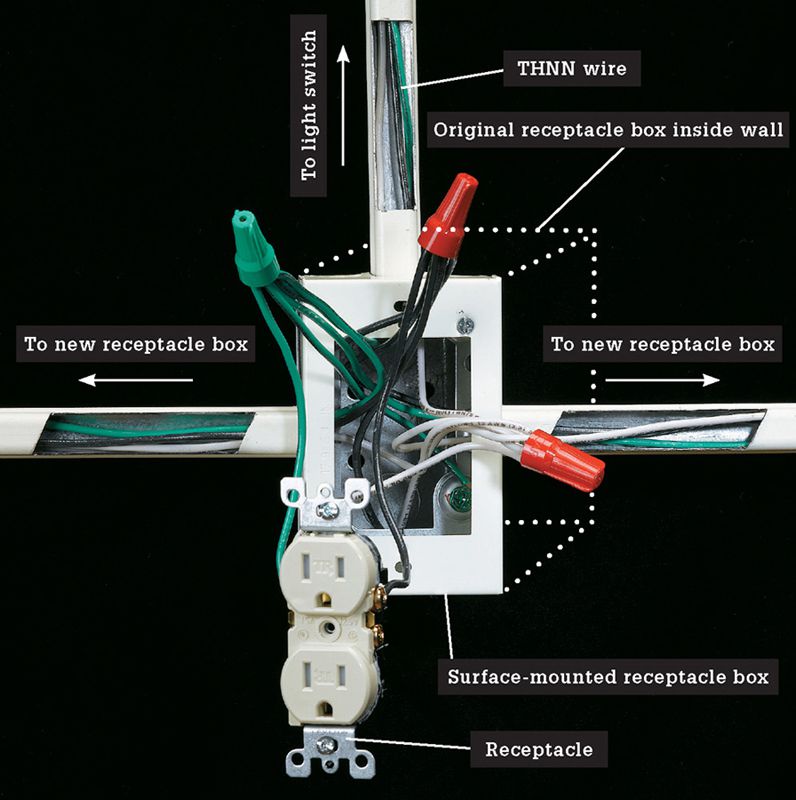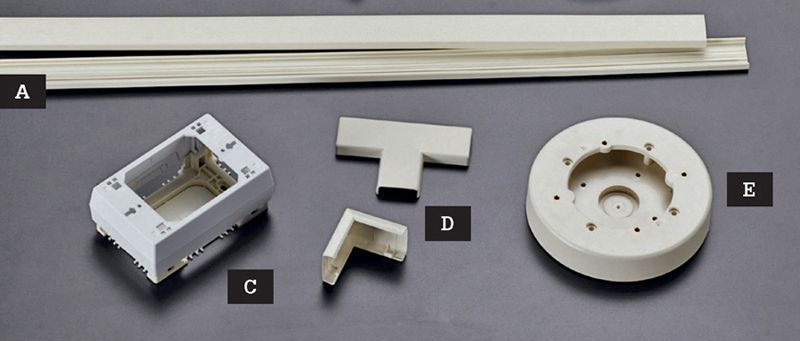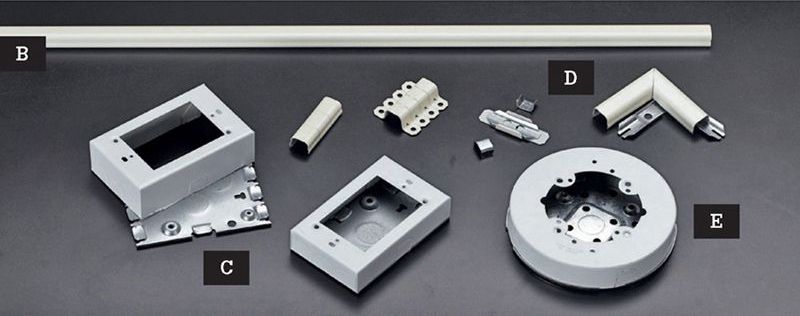WIRING
RACEWAYS: SURFACE-MOUNTED WIRING
Surface-mounted wiring is a network of electrical circuits that run through small, decorative tubes that function much like conduit. The systems include matching elbows, T-connectors, and various other fittings and boxes that are also surface-mounted. The main advantage to a surface-mounted wiring system is that you can add a new fixture onto a circuit without cutting into your walls.
Although they are extremely convenient and can even contribute to a room’s decor when used thoughtfully, surface-mounted wiring systems do have some limitations. They are not allowed for some specific applications (such as damp areas like bathrooms) in many areas, so check with the local building authorities before beginning a project. And, the boxes that house the switches and receptacles tend to be very shallow and more difficult to work with than ordinary boxes.
In some cases, you may choose to run an entirely new circuit with surface-mounted wiring components (at least starting at the point where the feeder wire reaches the room from the service panel). But more often, a surface-mounted wiring circuit ties into an existing receptacle or switch. If you are tying into a standard switch box for power, make sure the load wire for the new surface-mounted wiring circuit is connected to the hot wire in the switch box before it is connected to the switch (otherwise, the surface-mounted wiring circuit will be off whenever the switch is off).
Surface-mounted wiring circuits are networks of cable channels and electrical boxes that allow you to run new wiring without cutting into walls. If you have a room with too much demand on a single receptacle (inset), installing a surface-mounted circuit with one or more new outlets is a good solution.
A surface-mounted receptacle box is mounted directly to the original electrical box (usually for a receptacle) and raceway tracks are attached to it. The tracks house THNN wires that run from the new box to new receptacles and light switches.
 PARTS OF A RACEWAY SYSTEM
PARTS OF A RACEWAY SYSTEM
Surface-mounted wiring systems employ two-part tracks that are mounted directly to the wall surface to house cable. Lighter-duty plastic raceways (A), used frequently in office buildings, are made of snap-together plastic components.
For home wiring, look for a heavier metal-component system (B). Both systems include box extenders for tying in to a receptacle (C), elbows, T-connectors, and couplings (D), and boxes for fixtures (E).




